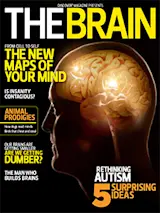On the quarter-mile walk between his office at the ÉcolePolytechniqueFédérale de Lausanne (EPFL) in Switzerland and the nerve center of his research across campus, Henry Markram gets a brisk reminder of the rapidly narrowing gap between human and machine. At one point he passes a museumlike display filled with the relics of old supercomputers, a memorial to their technological limitations. At the end of his trip he confronts his IBM Blue Gene/P—shiny, black, and sloped on one side like a sports car. That supercomputer is the center-piece of the Blue Brain Project, tasked with simulating every aspect of the workings of a living brain.
Markram, the 49-year-old founder and codirector of the Brain Mind Institute at the EPFL, is the project’s leader and cheerleader. A South African neuroscientist, he received his doctorate from the Weizmann Institute of Science in Israel and studied as a Fulbright Scholar at the National Institutes ...














